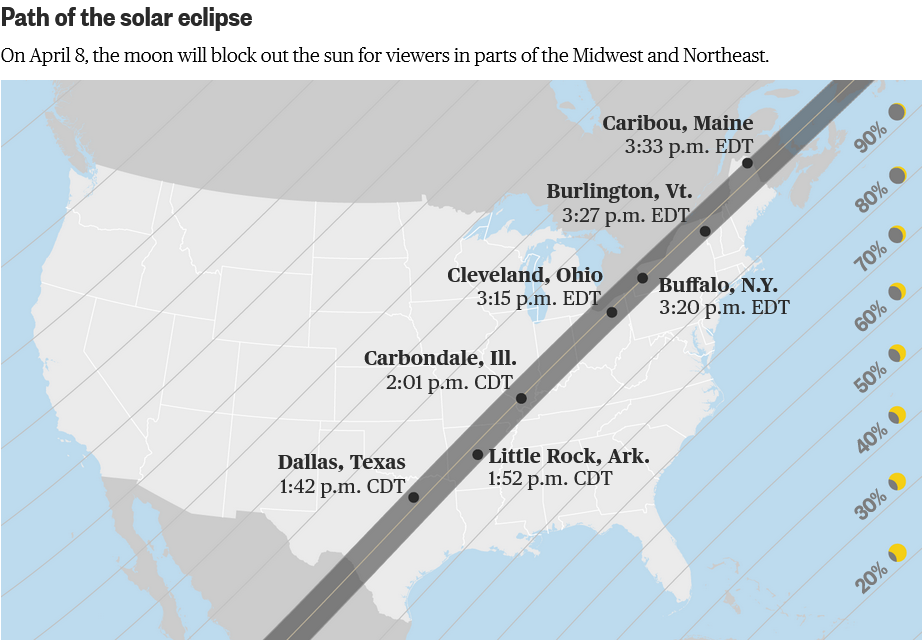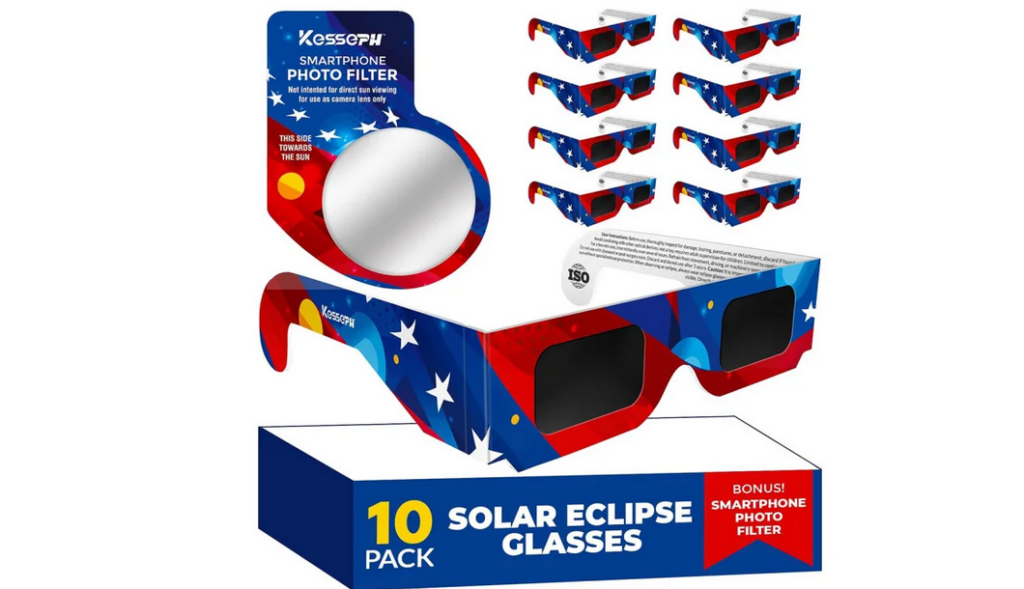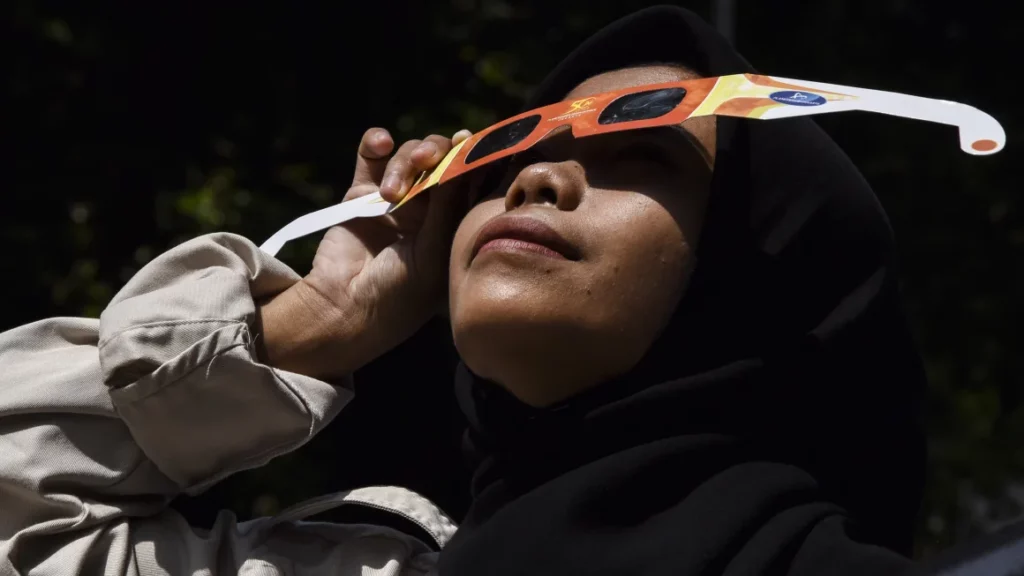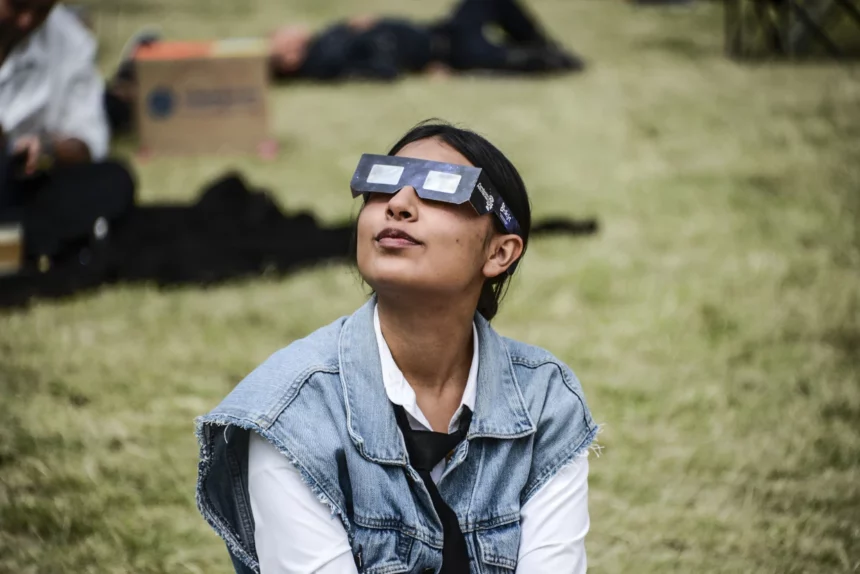Across the continental United States, an upcoming partial or total solar eclipse next month has people excited, yet it’s crucial to take precautions to prevent eye injury.
On April 8, a fascinating astronomical event will occur when the moon positions itself between the Earth and the sun, casting a shadow that will darken skies in a path stretching over 100 miles wide. This path of totality will traverse Mexico, parts of the U.S., and a corner of eastern Canada. Those located outside this path will witness a partial solar eclipse, where the moon covers only a portion of the sun.
Viewing this spectacular event safely is paramount. Specialized glasses designed for solar viewing or a DIY pinhole projector are recommended for watching the eclipse. Ordinary sunglasses, or attempting to view the eclipse through telescopes or binoculars without a special solar filter, even with eclipse glasses on, can lead to serious eye damage.

How to find proper eclipse glasses
To view the eclipse directly without harm, one must use glasses specifically made for solar observation. These glasses contain an ISO 12312-2 filter, crucial for protecting the retina from photothermal injury. Such glasses are significantly darker than standard sunglasses, a necessity according to experts in the field.
Viewing the eclipse without these protective measures can result in solar retinopathy, a condition that damages the retina’s sensitive cells, leading to decreased vision and potentially permanent blind spots.

When and how to wear your glasses
The eclipse can safely be observed without protection only during the brief moment of totality when the moon fully covers the sun. This phase is unmistakable, as the sun’s bright disk will completely disappear, making eclipse glasses unnecessary for a short period. Depending on your location, totality will last approximately three-and-a-half to four minutes.
For those observing a partial eclipse, it’s essential to keep the eclipse glasses on at all times to avoid eye damage.
It’s also important to note that eclipse glasses alone do not offer enough protection for those wishing to use optical devices like binoculars or cameras to view the eclipse. A special-purpose solar filter must be secured over the front of any such device to prevent severe eye injury.

Ensuring your glasses are safe
While there is no specific brand endorsed by astronomical authorities, seeking out reputable sources and avoiding potentially counterfeit products sold by third-party vendors online is advised. The American Astronomical Society provides a list of safe options and cautions against the flood of fake glasses on the market.
If you possess eclipse glasses from a previous event, such as the 2017 solar eclipse, they may be reused provided they are undamaged and free from scratches, punctures, or crinkles. The lens material does not expire, but it’s crucial to ensure the glasses remain in good condition.
How to make and use a pinhole projector
For those unable to secure proper glasses, a pinhole projector is a safe alternative for enjoying the eclipse. By allowing sunlight through a small hole onto a secondary surface, such as paper or cardboard, you can observe a projection of the sun safely.
Creating a projector involves covering a cut-out in cardboard with aluminium foil and puncturing a small hole in the foil. The projection of the sun’s image through this hole onto a secondary surface allows for safe viewing. Various household items, including colanders, can also serve this purpose, offering a creative way to observe the eclipse’s effects without direct sun observation. Even the dappled light through the leaves of a tree can cast crescent shapes during this astronomical event, providing a natural pinhole effect.







